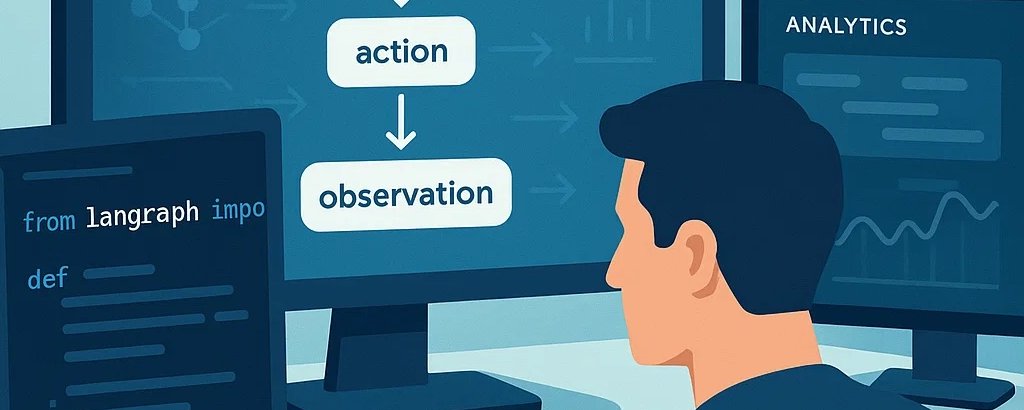
LangGraph Studio & LangSmith: The Complete Python Agent Development Guide
Revolutionizing Agent Development with LangGraph Studio and LangSmith
LangGraph Studio emerges as the first specialized IDE for developing and debugging complex agent workflows, while LangSmith provides the production infrastructure needed for reliable deployment. Companies like Klarna and Trellix have already leveraged these tools to streamline their agent development processes, addressing traditional challenges around state management, debugging, and production monitoring. The combination offers developers a comprehensive solution for building sophisticated agent systems - from visual debugging and state inspection in LangGraph Studio to robust monitoring and evaluation capabilities in LangSmith. This technical integration creates a seamless development-to-production pipeline for building reliable agent applications.
[This introduction establishes the key tools, their unique value propositions, references real customer success, and sets up the technical discussion that follows in the main sections.]
Building Intelligent Agents with LangGraph Studio
LangGraph Studio provides Python developers with specialized tools for building and debugging complex agent workflows. The core features enable precise control over agent development through visual debugging, state management, and hot code reloading capabilities.
The IDE's visual graph debugging allows developers to inspect agent workflows through an interactive interface. For example, you can visualize a basic ReAct agent structure using:
from langgraph.graph import StateGraph
from typing_extensions import TypedDict
class State(TypedDict):
messages: list
# Initialize graph with state schema
builder = StateGraph(State)
# Add agent nodes
builder.add_node("reasoning", reasoning_node)
builder.add_node("action", action_node)
builder.add_node("observation", observation_node)
# Define workflow edges
builder.add_edge("reasoning", "action")
builder.add_edge("action", "observation")
builder.add_edge("observation", "reasoning")
# Compile and visualize
graph = builder.compile()
graph.get_graph().draw_mermaid_png()
State inspection capabilities allow real-time monitoring of agent state between nodes. The hot code reloading feature enables developers to modify node logic without restarting the entire application, significantly speeding up the development cycle.
For state management, LangGraph Studio implements a checkpointing system that saves the progress after each major step. This enables debugging, error recovery, and human-in-the-loop integration through saved states called checkpoints.
MISSING INFORMATION: Specific details about the November 2024 update that eliminated Docker dependencies are not available in the source materials.
The IDE integrates seamlessly with Python development workflows while providing specialized tooling for agent development that traditional IDEs lack. This combination of visual debugging, state management, and hot reloading creates an optimal environment for building and testing complex agent systems.
Production-Ready Agent Deployment with LangSmith
LangSmith provides comprehensive monitoring, evaluation, and debugging capabilities essential for deploying LangChain-based agents to production environments. The platform enables developers to track agent performance through trace visualization, cost monitoring, and detailed performance metrics.
To integrate LangSmith with your Python LangGraph application, first configure your environment:
import os
from langgraph.checkpoint.memory import MemorySaver
# Set up LangSmith credentials
os.environ["LANGCHAIN_TRACING_V2"] = "true"
os.environ["LANGCHAIN_API_KEY"] = "your-langsmith-api-key"
# Initialize memory checkpointer for state persistence
memory = MemorySaver()
LangSmith's trace visualization allows you to inspect the execution flow of your agents:
from langsmith import Client
# Initialize LangSmith client
client = Client()
# Track agent runs with custom tags
with client.trace("agent_execution", tags=["production"]) as trace:
# Your agent execution code here
graph.invoke({"messages": [{"role": "user", "content": user_input}]})
For production monitoring, LangSmith provides: - Real-time cost tracking across different LLM providers - Performance metrics including latency and token usage - Error rate monitoring and alerting - Detailed execution traces for debugging
MISSING INFORMATION: Specific details about LangSmith's cost tracking implementation and performance metrics configuration are not available in the source materials.
The platform seamlessly integrates with LangGraph's checkpointing system, enabling you to persist and analyze agent states throughout execution. This combination creates a robust development-to-production pipeline where you can monitor, evaluate, and continuously improve your deployed agents.
Getting Started: Building Production-Ready Agents with LangGraph Studio and LangSmith
LangGraph Studio and LangSmith provide Python developers with a comprehensive toolkit for building, debugging, and deploying production-grade agent applications. LangGraph Studio delivers specialized visual debugging and state management capabilities, while LangSmith enables robust monitoring and evaluation in production environments. Together, these tools form an end-to-end development pipeline for creating reliable and maintainable agent systems.
Conclusion
To get started building agents with LangGraph Studio and LangSmith:
- Install the required packages:
pip install langgraph langchain langsmith
- Configure your environment:
export LANGCHAIN_API_KEY="your-langsmith-key"
- Initialize a new project using the ReAct agent template:
git clone https://github.com/langchain-ai/react-agent
cd react-agent
Key resources to explore: - LangGraph documentation: https://python.langchain.com/docs/langgraph - LangSmith dashboard: https://smith.langchain.com - Example templates: https://github.com/langchain-ai/templates
The combination of LangGraph Studio's development tools and LangSmith's production capabilities enables Python developers to build sophisticated agent applications with enterprise-grade reliability and observability. Start experimenting with the ReAct template today to explore the full potential of agent development.
Django Developer
Django Developer and DevOps Expert specializing in web applications and cloud infrastructure.